| Title | The Legend of Zelda™: Link’s Awakening (2019) |
| Released | Sep 20, 2019 |
| Developer(s): | Grezzo |
| Publisher(s): | Nintendo |
| Platform(s): | |
| Genre | Action, Adventure, Top-Down |
| Rating | E |
| Price | $59.99 |
Completed on the Nintendo Switch 2 in Docked Mode on Normal
HowLongToBeat Time: Main + Sides (16½ Hours) | My Clear Time: 15 Hours
Background
First released on the Game Boy in 1993, The Legend of Zelda: Link’s Awakening stood out for delivering a full Zelda experience on a handheld. In 2019, Nintendo and developer Grezzo rebuilt the game for the Switch, trading pixels for a handcrafted diorama style while keeping its puzzles, dungeons, and strange story intact. Quality-of-life tweaks like warp points, streamlined menus, and a dungeon-building feature helped modernize the classic while staying true to its roots.
The development team for The Legend of Zelda: Link’s Awakening (2019) includes:
- Shun Moriya (Game System Development): Echoes of Wizdom, Final Fantasy VIII, Crisis Core: Final Fantasy VII
- Mikiharu Oiwa (Director): Majora’s Mask 3D, Dawn of Mana, Ocarina of Time 3D
- Kazuhiko Takahashi (Art Director): Ocarina of Time 3D, Four Swords – Anniversary Edition, Tri Force Heroes
- Ryo Nagamatsu (Composer): Splatoon 3, Mario Kart Wii, Super Mario Galaxy 2
- Eiji Aonuma (Producer): Phantom Hourglass, Ocarina of Time 3D, Link Between Worlds
Experience
My own history with Zelda leans heavily on Oracle of Seasons (still my favorite), Oracle of Ages, Link to the Past, Minish Cap, Wind Waker, and Breath of the Wild. Coming into Link’s Awakening for the first time on Switch, the game felt instantly familiar yet distinct. Its compact island setting and top-down view reminded me of the Oracle games, offering a more focused journey than the sprawling maps of Wind Waker or Breath of the Wild.
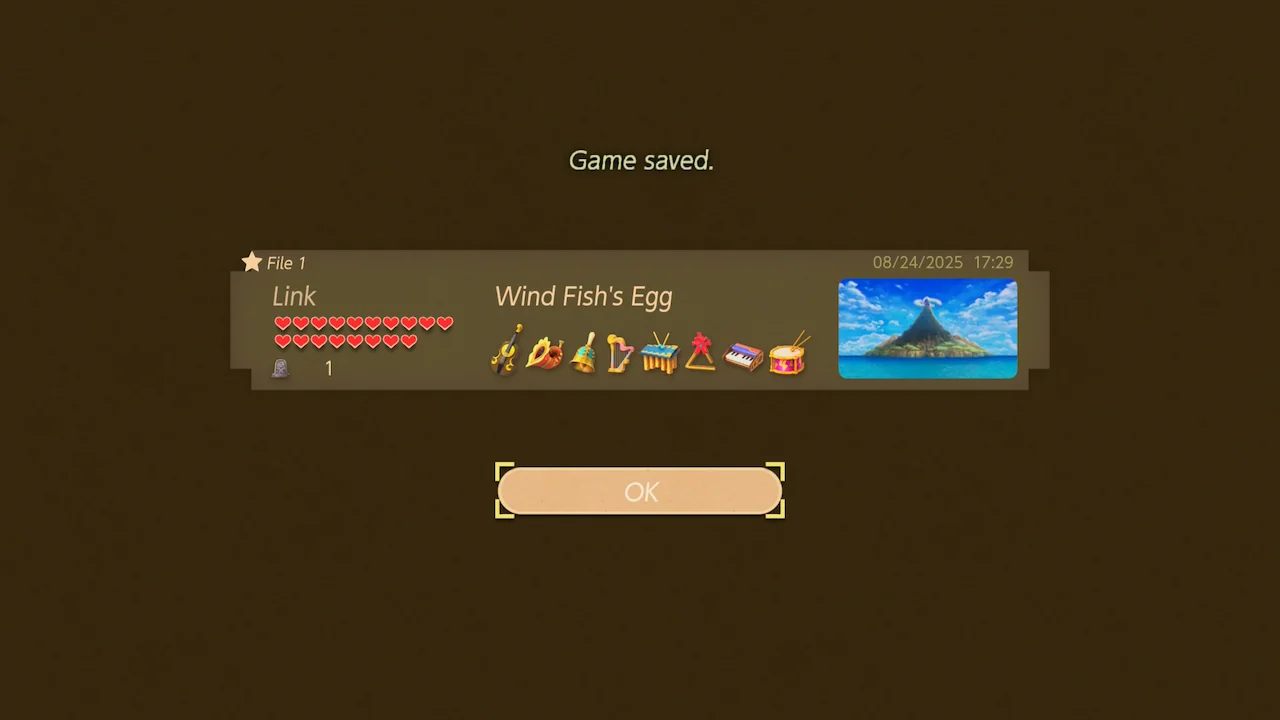
Save file clear on Koholint Island.
This version emphasizes puzzles, exploration, and creative use of items—the kind of gameplay that has always defined 2D Zelda at its best.
Impressions
Introduction
Shipwrecked by a storm, Link washes up on Koholint Island with only one way to return home: awaken the mysterious Wind Fish. What follows is a smaller-scale Zelda adventure, but one with a strange, dreamlike quality. The characters are eccentric, the dungeons are clever, and the story carries a bittersweet edge that sticks with you. Grezzo’s remake sharpens the details and frames it all in a toybox world that feels alive.
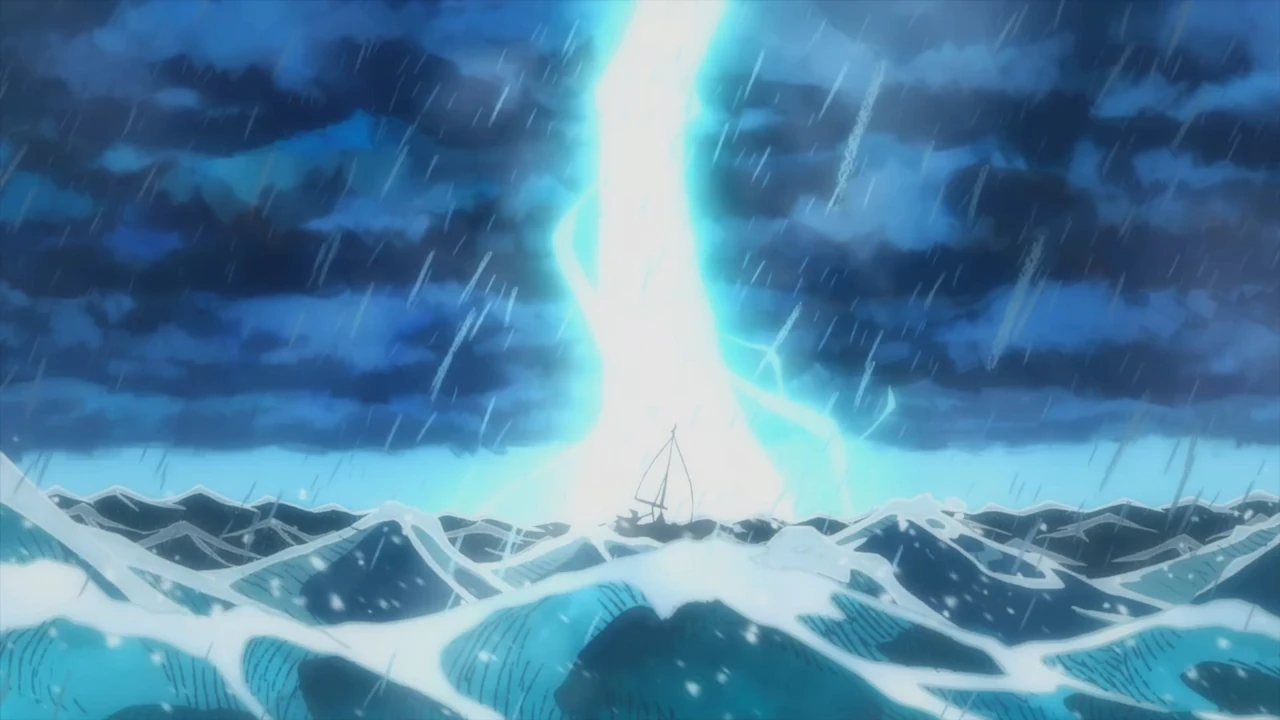
Link’s voyage to Koholint begins in chaos.
Gameplay & Mechanics
At its core, Link’s Awakening delivers classic Zelda gameplay—top-down exploration, item-based puzzles, and responsive combat. The island is compact but carefully designed, making every new tool feel meaningful.
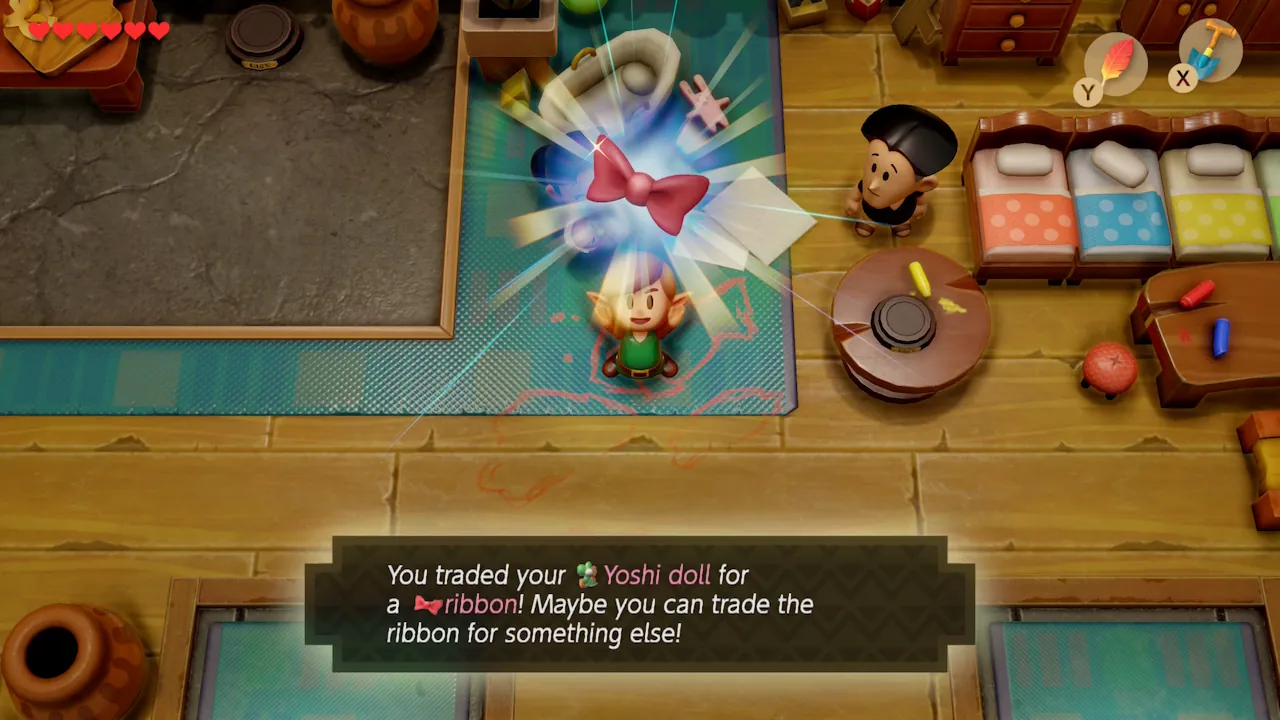
The quirky chain trade continues.
Trading Quest
A quirky item-trading chain runs throughout the game, with odd exchanges like handing over a stick to get a honeycomb. It’s silly, but it ties the NPCs together and adds personality to the island.
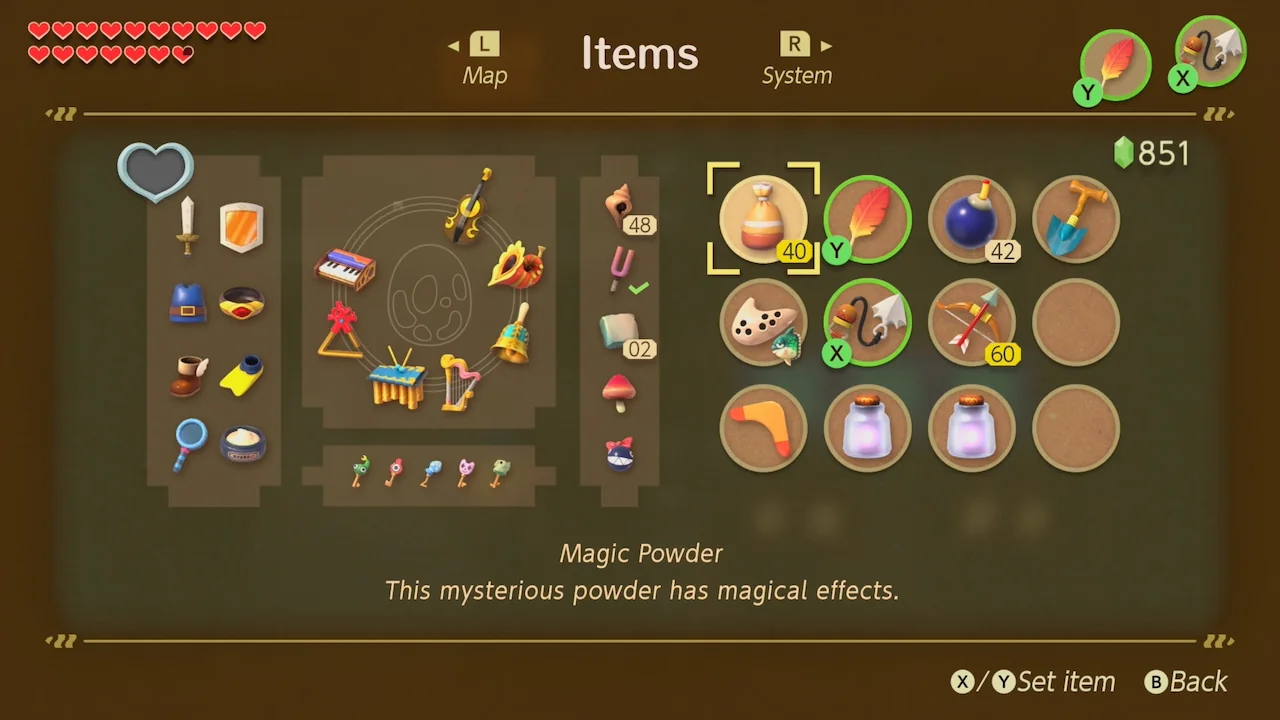
Gear up for puzzles and combat.
Two-Slot System
Items map to the X and Y buttons, while sword and shield have dedicated slots. It’s a huge improvement over the Game Boy original, making switching between tools smooth and natural.
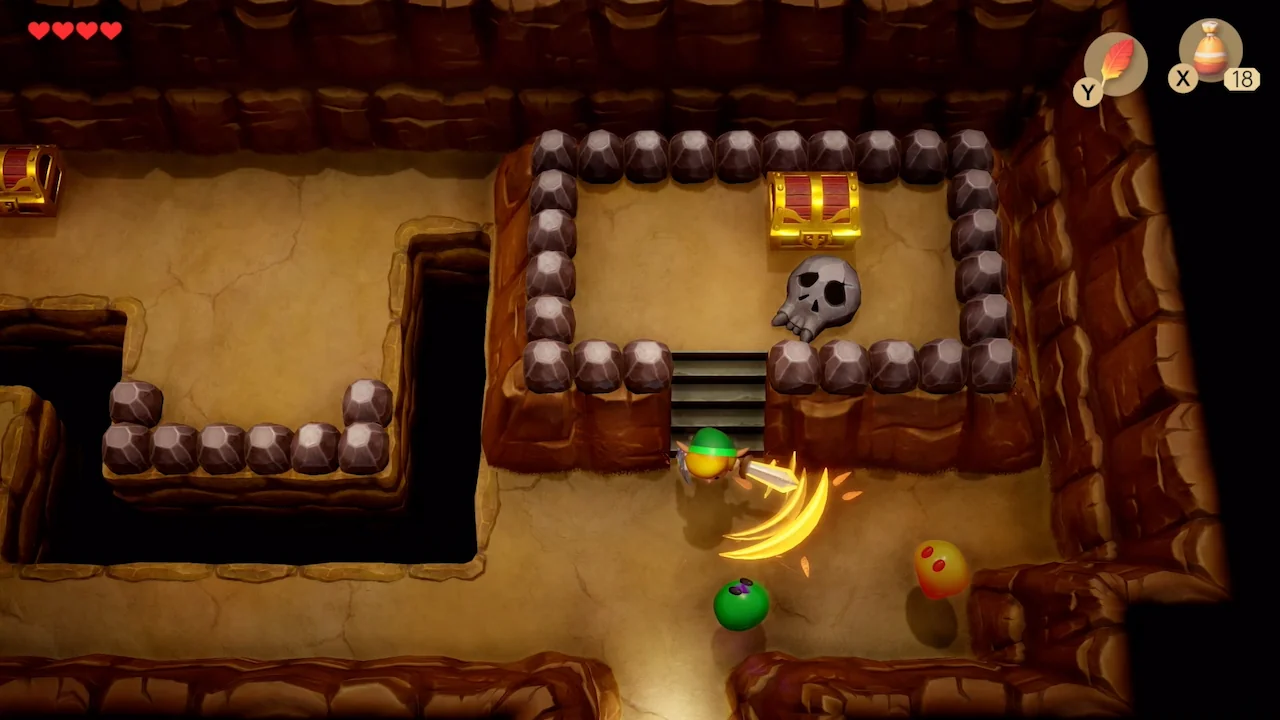
Classic 2D Zelda combat returns.
Combat System
Simple and direct, combat is about quick strikes and timing rather than complex mechanics. Enemies often act as moving puzzles more than real threats.
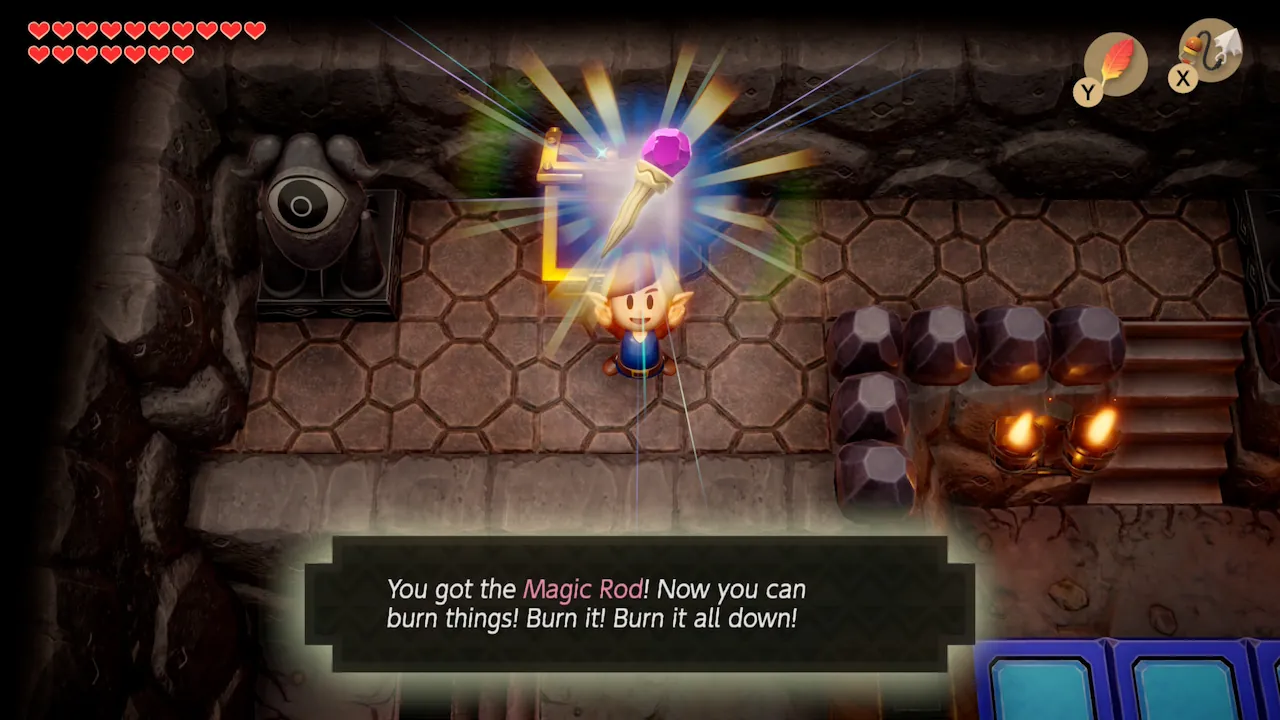
The Magic Rod brings the heat.
Dungeons
The eight dungeons shine, each tied to a key item like Roc’s Feather or the Hookshot. They’re smaller than Link to the Past’s, but the puzzle design gives plenty of “aha!” moments
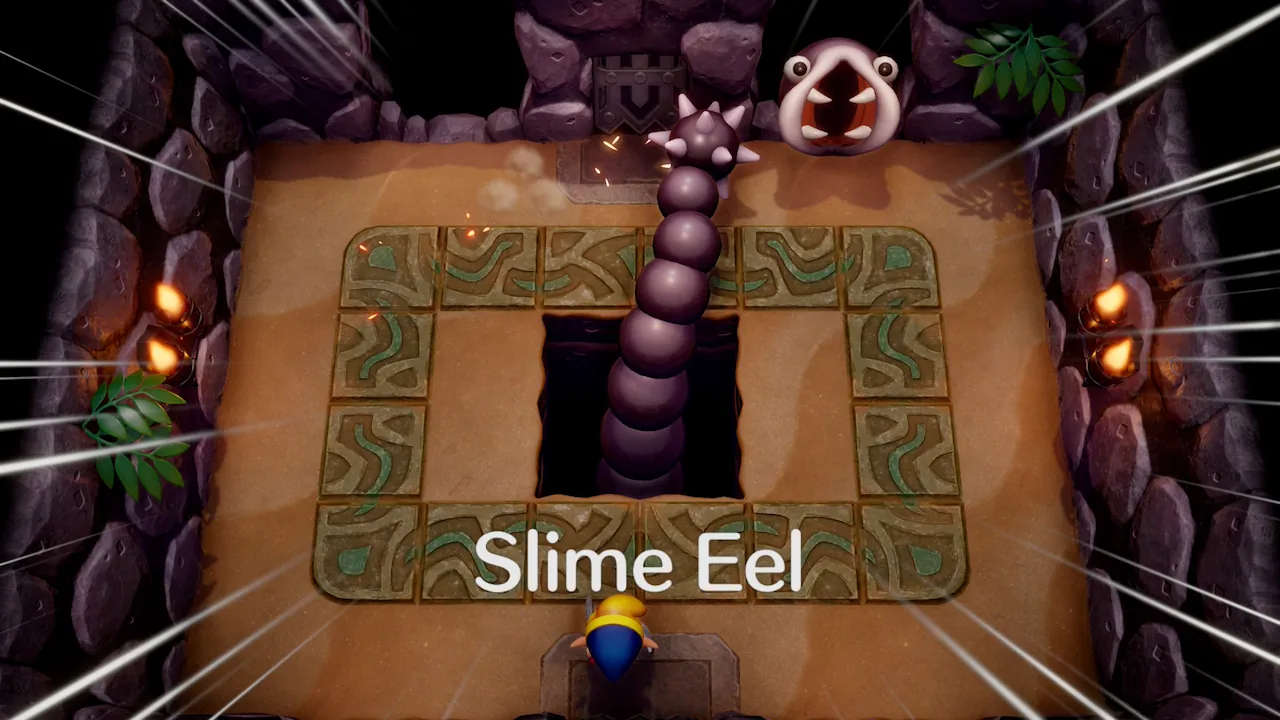
The Slime Eel lurks in the depths.
Boss Battles
Each boss uses the newest item in clever ways. They’re not overly difficult but memorable enough to stand out, from the tricky Genie to the oversized Slime Eel.
The flow of puzzles felt intuitive, with items often working together in ways that make problem-solving satisfying.
Art & Audio
The diorama-inspired art style gives the island a handcrafted feel. Characters look like figurines, the world looks staged, and a soft blur effect at the edges sells the “toybox” illusion. It’s playful, but there’s an underlying atmosphere that keeps the dreamlike tone intact.
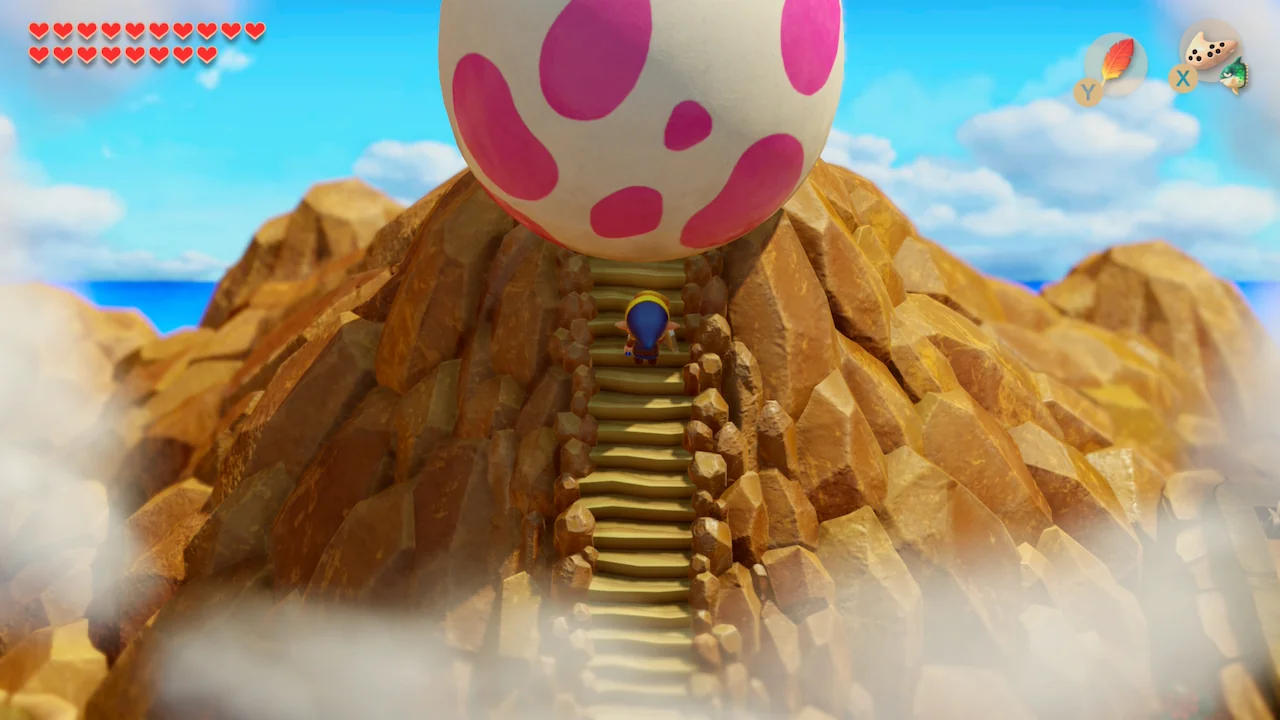
The Egg looms with diorama charm.
Ryo Nagamatsu’s soundtrack reworks the Game Boy originals into rich, full arrangements. Standout tracks include:
Standout tracks:
Overworld Theme – Bright and playful, it dances with the toybox visuals, inviting exploration.
Mabe Village – Cozy and whimsical, it makes every NPC chat feel like home.
Ballad of the Wind Fish – The emotional core, its soaring strings carry the story’s bittersweet weight.
The art and audio weave a spell that’s pure Zelda magic, amplifying every moment.
Performance
This is where my experience split in two. On the original Switch, performance problems—noticeable stuttering during transitions—broke the flow so badly that I dropped the game. With the free Switch 2 patch, those issues are gone. The game now runs smoothly, letting the visuals and soundtrack shine the way they should have at launch. For me, that made all the difference in actually finishing the journey.
Unique Features & Mechanics
This remake introduces some elements exclusive to Link’s Awakening (2019), setting it apart from both its Game Boy roots and other Zelda adventures.
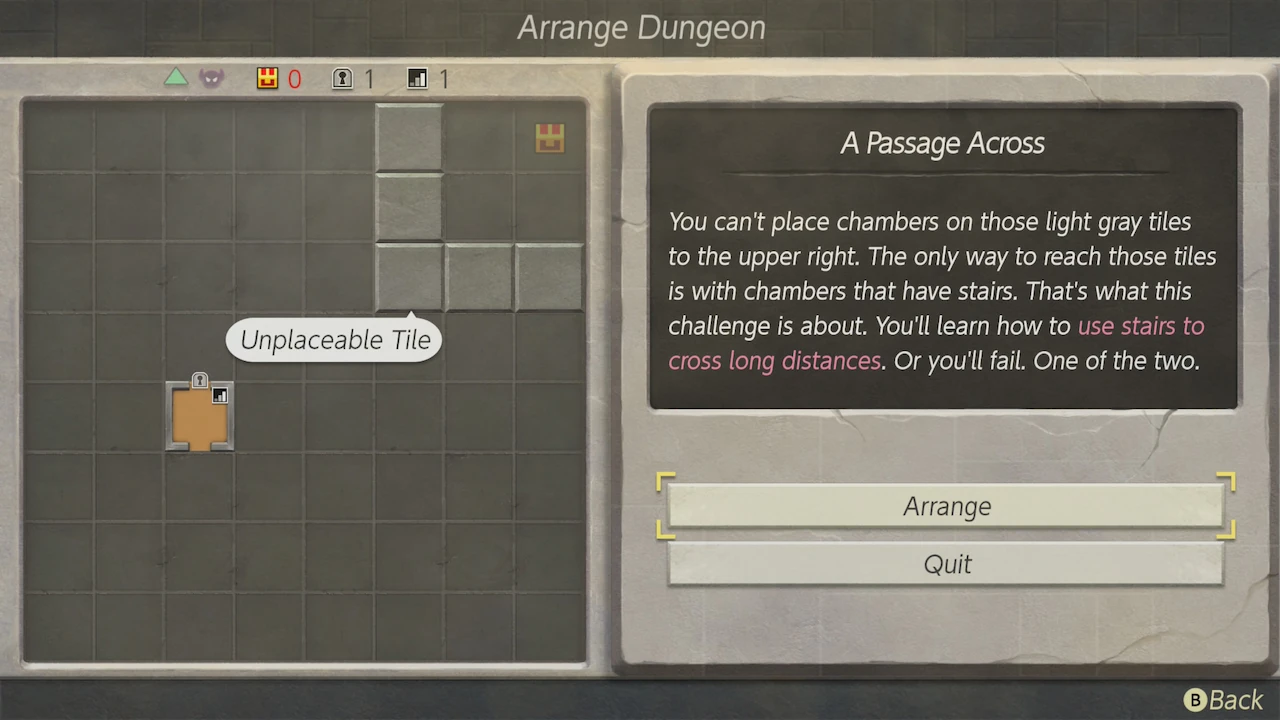
Dampé’s Chamber Dungeon lets you tinker with Koholint’s rooms.
Chamber Dungeon
Dampé lets you piece together dungeons from existing rooms. It’s an interesting side activity, but the limited room options make it feel more like a curiosity than a core feature.
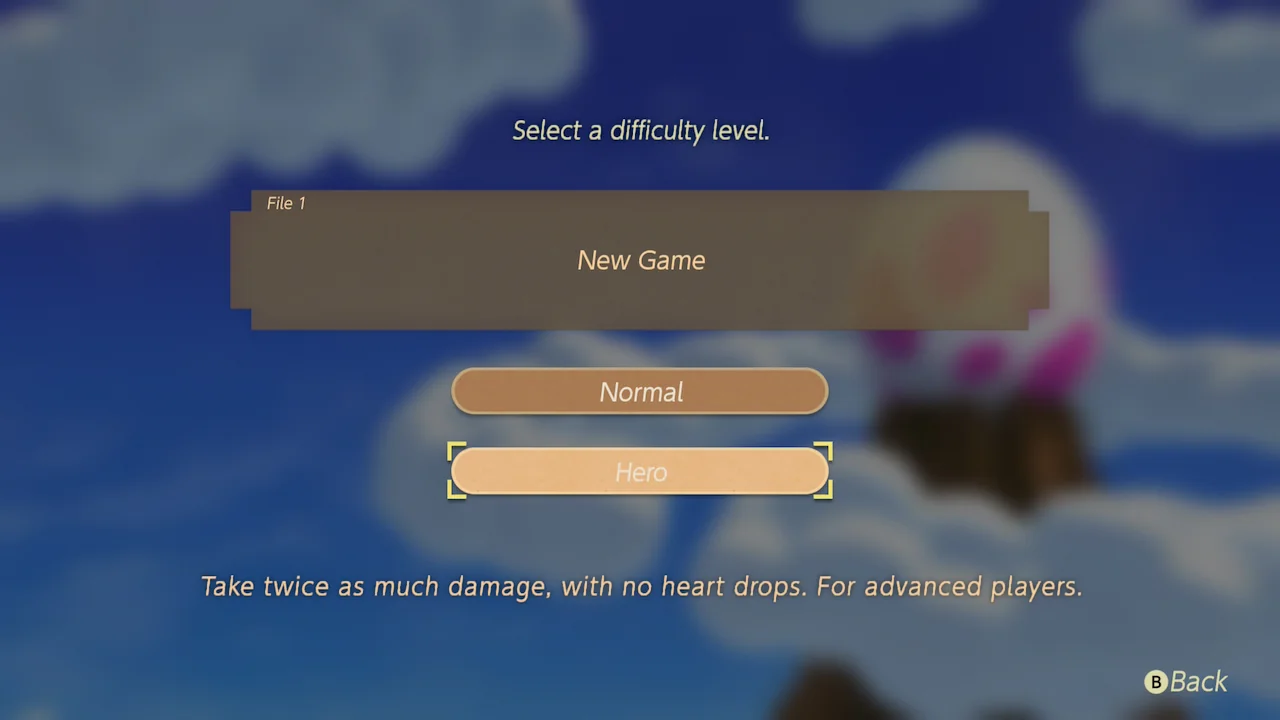
Hero Mode limits healing to fairies, heart pieces, and secret medicines.
Hero Mode
Exclusive to the 2019 Switch remake, Hero Mode increases the challenge by restricting healing to fairies, heart pieces, containers, and secret medicines. It turns Koholint into a more strategic adventure, rewarding careful exploration and combat.
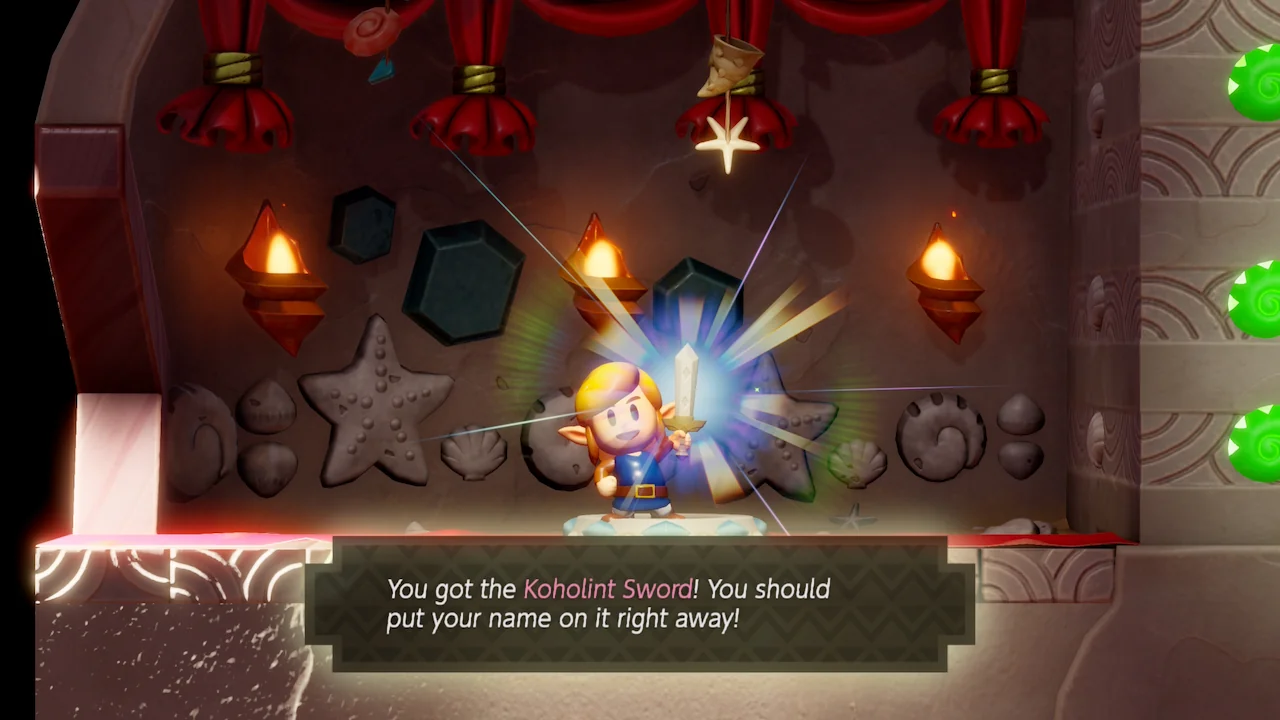
Collecting 40 seashells upgrades Link’s sword to double damage.
Seashell Collection
Collecting 40 hidden seashells rewards exploration with upgrades like the Koholint Sword, which doubles attack power. It’s a great incentive to check every corner of the island.
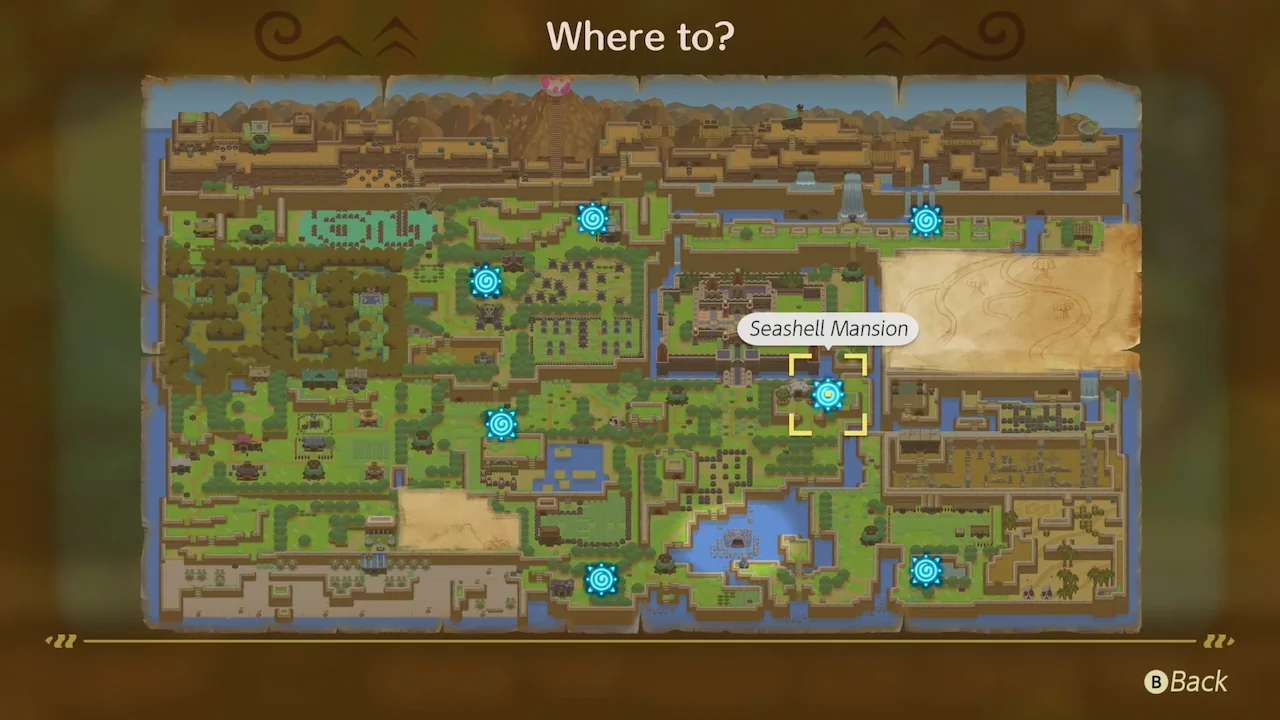
Quality-of-life improvements like warp points make backtracking faster and smoother.
Quality-of-Life Enhancements
Warp points and streamlined menus ease backtracking, tailored to Koholint’s compact design. Unlike Breath of the Wild’s open-world fast travel, these tweaks keep you in the adventure’s flow. Permanent sword and shield buttons free up item slots, a clever nod to modern players.
These features cement Link’s Awakening as a thoughtful reimagining, blending nostalgia with modern flair. While the Chamber Dungeon doesn’t fully steal the show, the seashell hunt and polished navigation make every step on Koholint uniquely enchanting.
Verdict
The Legend of Zelda: Link’s Awakening on Switch is both faithful and approachable. Its scale is small, but that works in its favor—it’s a tight adventure full of clever dungeons, charming NPCs, and a story that lingers yet doesn’t overstay its welcome. The handcrafted diorama visuals and Ryo Nagamatsu’s soundtrack make Koholint Island feel alive, adding extra charm to the experience. Combat is simple, and the Chamber Dungeon is more novelty than core feature, but the overall package works.
Performance issues on the original Switch soured my first attempt, but with the Switch 2 patch those problems are fixed. This remake now feels complete, and for players new or old, it’s the best way to experience Koholint Island. My time there was an enjoyable vacation, leaving me hopeful that Grezzo might revisit Oracle of Seasons and Oracle of Ages next.
TLDR
Link’s Awakening (2019) (Switch 2)
8.5
Very Strong
Summary: For Zelda veterans or newcomers, this compact epic proves small worlds can cast big shadows.
Grab it on Switch, awaken the Wind Fish, and let Koholint’s charm steal your heart.


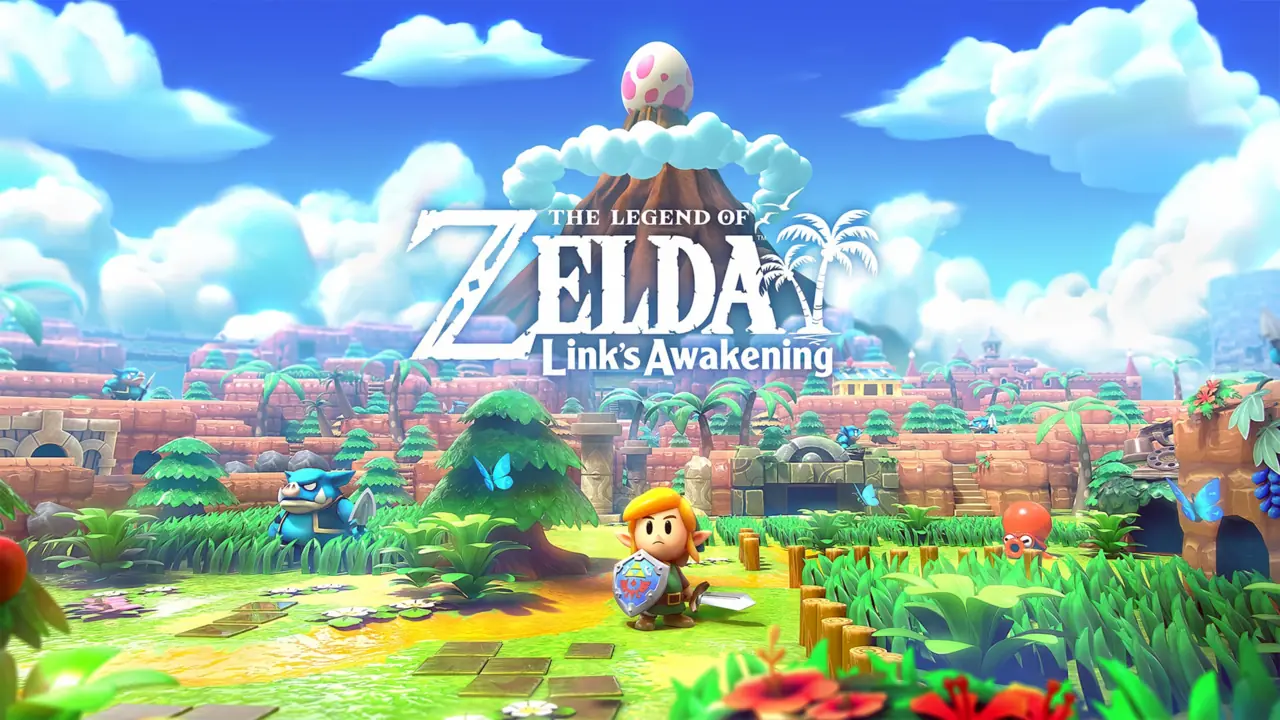
Leave a Reply